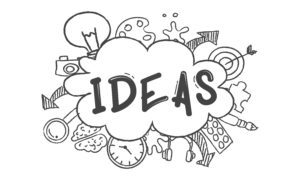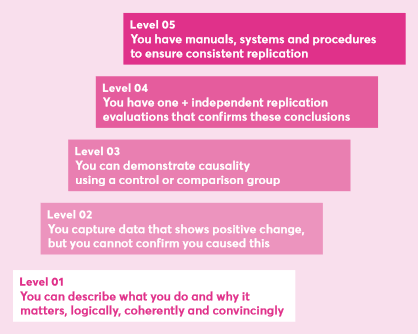
For those of you trying to decide right now the best way to get creative about your products, processes, or problems, a new report is worth a look. Nesta, “The Innovation Foundation” in the United Kingdom, recently released A Compendium of Innovation Methods. It was written by 24 contributors including researchers, leaders of innovation organizations, and business leaders. In the report’s introduction, Kirsten Bound, Nesta’s Executive Director of Research Analysis and Policy, and Chief Executive Geoff Mulgan explain the compendium’s raison d’etre: “Much of 20th century innovation, from transistors and integrated circuits to polycarbonate and neoprene, was driven by big laboratories in governments and big firms…” Today, though, digital technology, new collaboration methods, and big data have enabled broader sources.
“For the last decade or more, Nesta has been searching for ways to support innovations that exploit these new trends, aiming to spread the capacity for innovation and apply it to the problems and communities most in need. Featured in this compendium are just some of the innovation methods we have analysed, developed, tested and spread…” The report says this approach allows them to promote methods based on experimentation, not just somebody’s claims, and to express caution when claims become overblown.
Each of the 13 sections describes a process for increasing innovation, written in a standard format that: explains how the process works; says what Nesta has done with it; has one or more case studies; and provides references for more information. Some of the processes require government involvement, like “anticipatory regulation” to stay ahead of technology changes, and grants for social innovation. Others are ways to provide funding to innovative companies. But six could easily be implemented by a single enterprise, either for its own people or to attract ideas from outside. These I’ll summarize for you below in hopes you’ll download the free report for details and examples.
The section titles in bold and the quotations are directly from the report.
Accelerator programs. “Accelerators provide intensive and time-limited business support for cohorts of startups, aiming to get them ready for investment more quickly than traditional incubators.” These have been sponsored by governments, venture capital firms, and large corporations. For a limited period of several months to a year, they provide mentoring or training to a group of selected startups and “encourage a high degree of peer-to-peer learning…” Setting up an accelerator might be a way for your company to outsource a big problem to startups investing only your internal experts’ time. Or you could create one for teams of junior employees to work on an issue with mentoring from internal experts, setting aside a set amount of time each week.
Challenge prizes. “Challenge prizes offer a reward to whoever can first or most effectively meet a defined challenge… The formula is simple: offer a financial reward for the first or best solution to a problem, attract the best innovators, and give them the support they need to compete.” These work best for problems that can be clearly defined, and likely solved with limited cost and time. Such prizes date back centuries, to competitions helping ships determine their longitude and the military to preserve food, and include recent DARPA challenges. Nesta offers a free how-to guide. Its Open Up Challenge resulted in a number of products and services around open banking. This might help you outsource a smaller solution without taking as much of your people’s time, or stimulate “skunk works” (informal self-organized teams) among employees.
Experimentation. “An experiment is a way of trying something new while putting in place the necessary structures to find out if it works.” Different types are listed:
- “Randomised controlled trials (RCTs)… use a control group to compare people who have received an intervention with similar people who didn’t. To make sure the groups being compared aren’t biased, they are randomly assigned.”
- A form of RCT, A/B tests, “randomly assign a particular design or communications strategy—the wording of a letter or the header of a website—to different groups of users. We can then compare response rates to see what was most effective.”
- “Rapid experiments enable teams and organisations to work together to solve problems, collaborating to design, implement and test small changes in short loops that provide data on whether innovations are producing better results than ‘business-as-usual.’”
- “Design exploration and experimentation takes an experimental approach to developing or testing innovations… At the earliest stages when new ideas are being explored, trying out new and different frames helps develop ideas and reframe them as hypotheses.”
Nesta ran an RTC to see if investment vouchers given to randomly selected small and medium firms in one town would lead to innovative marketing efforts that boosted sales. In the first six months, yes. But after 12 months, there was no significant difference between recipients and nonrecipients. This is an example of neutral results being as valuable as positive ones, because these prevented Nesta from wasting money on a program with no long-term value.
People Powered Results: the 100 day challenge. Though intended for citizens and cross-agency teams working to improve public services, this intrigued me as a way to solve cross-functional issues within a larger organization as well. This line leapt out: “Frontline practitioners and people who use public services have unrivalled expertise in how the system operates, but often have little influence or ownership over change.” This is exactly my experience with line employees and customers at my many clients or employers over 25 years.
In this process, leaders “break down longer-term strategies into challenges with measurable objectives. Frontline practitioners and citizens (then) set ambitious goals and develop and test creative solutions in real conditions.” This progresses in three phases: 1) setting up the support structure such as data tools and facilitators; 2) convening the teams to kick off 100 days of self-directed experimentation, with a check-in gathering at the 50-day mark; and 3), a session to share results and “shape their sustainability and scaling plans.”
Nesta led an effort for the U.K. health care system that “generated new ideas about how to improve care for older people, reduce unplanned hospital admissions, improve discharge from hospitals and even helped develop a new preventative care process for people at risk.”
Prototyping is familiar to those in product development, but Nesta says the concept is spreading to many fields. “A model version of a product or service elicits feedback and remodelling before extensive resources are committed to implementation.” It is not intended to replace pilot testing, the report says, but can help shape the pilot or even indicate a pilot won’t work before spending money on one. If you use an iterative development process like Scrum, you prototype automatically: Each sprint produces a workable product (or at least a customer-presentable design) for feedback.
Standards of Evidence “provide a structure… for thinking about whether you are making a positive difference. Typically, the lower levels show that there is only limited evidence (that you are); higher levels show that more evidence is available.” In short, these push you to look for measurable proof that your innovations are doing what you hoped they would, instead of relying on people’s perceptions. If you have heard of “maturity models,” think of this as one for rational decision-making about innovations. Here is Nesta’s model from the report:
The report explains that the “first step of that journey asks you to describe what you plan to do, in a way that is coherent, clear and convincing. This is often referred to as a ‘Theory of Change’ and… helps you to be explicit about your goals—and how you’ll achieve those goals,” before trying the change. As the organization matures, it learns to gather data in experiments or pilot studies, preferably comparing results to similar test groups that don’t participate in the change. Eventually you try repeating the results (Level 4) before standardizing the change through policies and procedures.
This approach seems obvious. But I have often seen companies and agencies do only Level 1 before skipping to Level 5. Some partially did levels 2 and 3 in the form of limited data gathering, and possibly a pilot test, but without formally eliminating other possible causes for the results or trying to replicate them.
If you want to try a tested practice to generates new ideas about an issue you face, download the report and also visit DIY: Development Impact & You. This site includes free modules and tools for innovation you can take into your next team meeting, like a “Fast Idea Generator.”
As video gamers might say, it’s time to level up.
Please share this post at the bottom of the page.
Source: Nesta (2019), A Compendium of Innovation Methods. Nesta: London.
Free download: https://media.nesta.org.uk/documents/Compendium-of-Innovation-Methods-March-2019.pdf

